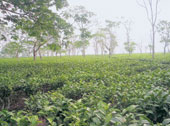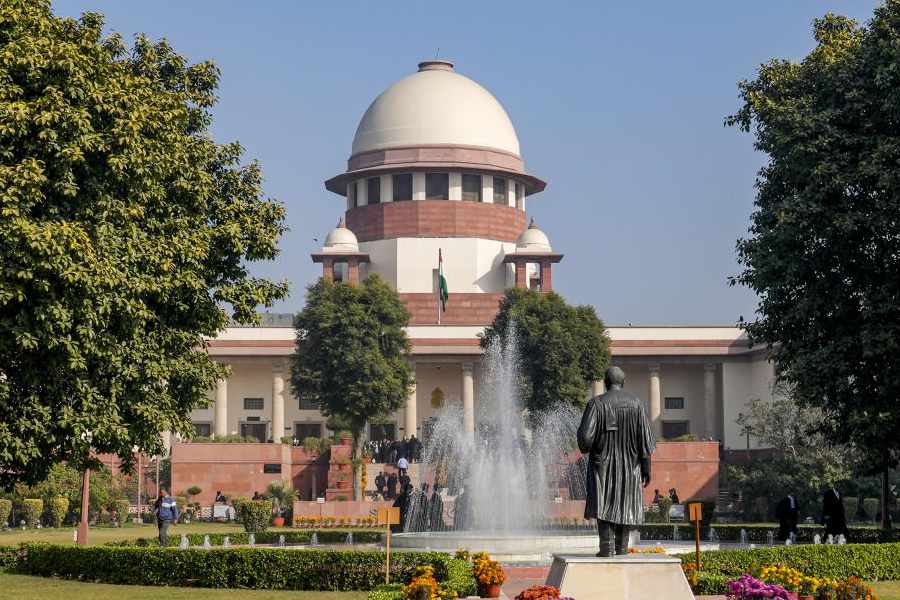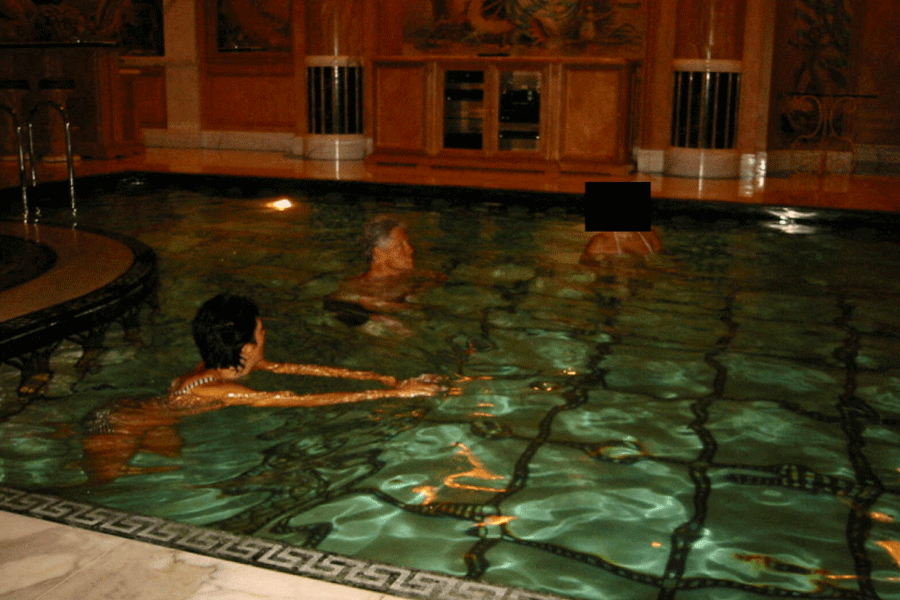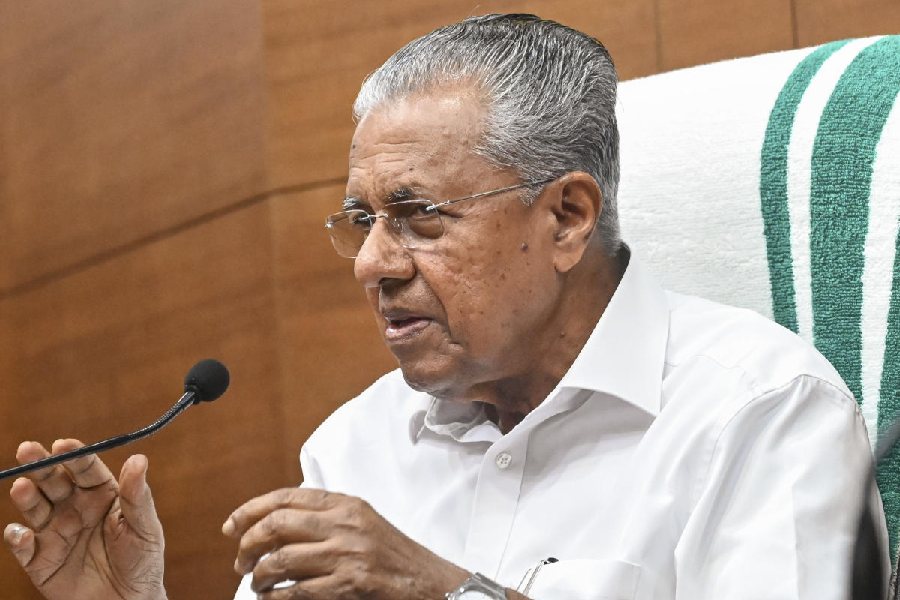 |
 |
 |
 |
 |
| (From above): A tea plantation in Chalsa; a patch of organic red cabbage at Sinclairs Retreat; a view of Coronation Bridge across the River Teesta; elephants in the Gorumara reserve; the Sinclairs Retreat |
How many of you can tell your English Breakfast tea from a cup of Earl Grey or Caravan? But here I am on a hilly spot in the Dooars being regaled by stories about small panthers crouching amongst the tea bushes and pythons slithering through the wild undergrowth. And I’m thinking that the tea I’m drinking started its life in a tea bush not far from where I’m sitting.
The adventure begins from the moment you cross the Coronation Bridge over the burbling Teesta, flanked on both sides by steep cliffs with verdant cover. During the two-hour drive from Bagdogra to Dooars, hordes of peacocks, their brilliant plumage lit up in the dappled sunlight, scamper for cover as you zip through the Mahananda Wildlife Sanctuary. Or you can feast your eyes on the sweeping vistas below. Gently nestled on the slopes are quaint wooden houses propped up by poles with orchids hanging from the verandahs. During the monsoons the foliage turns a bright shade of emerald. Also punctuating the drive are makeshift shacks selling fresh corn, an annual crop in this region, to tourists who stop by for refreshments on their way to Kalimpong, Sikkim or Jalpaiguri.
I’m on my way to the Sinclairs Retreat Dooars. But there’s heaps to see in different spots nearby. Once you reach Chalsa, for instance, a trip to the Gorumara National Park is an absolute must. The park is filled with trees like teak, simul, siris and sal and you can frequently spot animals like the Gaur (Indian bison), the one-horned rhinoceros, elephant, leopard, deer, python and the Malayan giant squirrel.
Also declaring their presence in a cacophony of chirps and twitters are the Brahmany ducks, cormorants, darters, egrets and storks. And the intrepid tourist can spice up his trip to the wilderness by spending the night at the Gorumara Forest Resthouse or by going on an exciting wildlife trail. The word resthouse is a misnomer though, since all you’ll be doing in Gorumara is hopping from one watch-tower to another to get a closer view. The Jatraprasad Watch Tower, Chukchuki Tower and the Chandrachur Tower are vantage points overlooking the flood plains of the Murti and Jaldhaka rivers of north Bengal.
It’s time to leave the grasslands and climb to a higher altitude. Getting my trekking gear together, I hit the road to Samsing, located at a height of 600m in the Darjeeling district of West Bengal. As you drive up the winding mountain tracks, soak in the breathtaking view of rolling orange orchards and cardamom plantations perched on the hill terraces. The most exciting part of the trip is the short trek to Mouchuki, which is the entry point to the Neora Valley National Park. Believe me, it’s not an uphill task (pun intended) for amateur trekkers to amble along the gentle slopes to Mouchuki and explore the local culture.
But for those who would like to take it easy, Suntalekhola (Nepalese for beautiful stream) with its gurgling brook, moss green boulders and a fragile footbridge that shakes every time you step on it, is the place to be. It is surrounded by mountains on all sides.
By the time, I returned to my actual destination, the Sinclairs Retreat Dooars, I had a fair idea of the natural vegetation of the area. But the horticulturist at the retreat was still able to teach me a thing or two about growing exotic vegetables in a place like this. As you take a leisurely walk from your cottage to the dining room, you’re greeted by the sight of vegetation that can range from medicinal shrubs and flavouring herbs to exotic vegetables and aromatic plants.
The air of the dining hall is redolent with the fragrance of Malabar nut juice that’s freshly brewed every morning for guests. This is hugely popular among foreign tourists because it’s said to be good for coughs and colds. And almost everything at the table from the red cabbage and cherry tomatoes to the broccoli and bell-peppers of different hues is farm-fresh. Even spices like bay leaf are hand-picked from the garden, cleaned and preserved without using chemical stabilisers.
“We’re even growing stevia in our gardens, the leaves of which can be added to herbal tea as a replacement for chemical sugar supplements used by diabetics,” says Sanjay Jana, supervisor, plantation operation, Sinclairs Retreat. In fact, everything inside the retreat is unaffected and natural with minimal use of concrete. Says Navin Suchanti, Chairman, Sinclairs Hotels Ltd, “The brief given to the landscape artist was to maintain the natural undulation of the hilltop on which the retreat is built.”
Sinclairs also has a special Dooars in the Rain package on offer right now. This three-night, four-day deal will set you back by Rs 5,485 per head.
A well-appointed health club is one of the highlights of the retreat. So, if you’ve been working your fingers to the bone lately and long to let your hair down, pamper yourself with Shirodhara, the mud baths, aroma massages and Pranayam. It’s a great way to revitalise and rejuvenate your senses. There are even several therapeutic options like colonic irrigation, spinal baths and hip baths, which all follow the basic principles of naturopathy to treat lifestyle-related ailments.
Refreshed and rejuvenated, you can answer the call of the wild by going white water rafting on the river Teesta. Flowing over jagged rocks and crags, the Teesta has several rapids of varying intensity and is the perfect setting for this extreme water sport. Labelled as Grade IV on the international scale, the rafting stretch on river Teesta is attracting tourists by the droves. There are various levels of the sport catering to the degree of proficiency of those taking part in it.
There are plenty of other attractions that are just a stone’s throw from Chalsa. And I returned from the plains, taking back just the right blend of indulgence and adventure.
Photographs by the author











